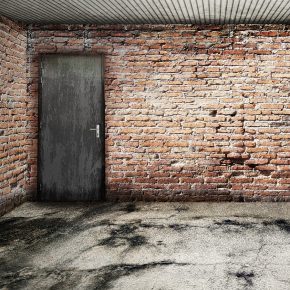
Net Zero: How Will Homes Change?
The world is facing an existential crisis in the form of climate change, as rising global temperatures wreak devastating impacts on communities and ecosystems in every continent. Ahead of the COP27 summit in Sharm El Sheikh, the UN unveiled a scathing report indicating that no real headway had been made in combatting climate change and that there is ‘no credible pathway to 1.5C [maximum temperature rise by 2030] in place’.
But governments worldwide have nonetheless been instituting various measures to attempt to reduce their own national carbon emissions, with the UK no different. One area of particular scrutiny is the ‘built environment’ – encompassing construction and the emissions associated with domestic and commercial premises – which is earmarked to be responsible for a quarter of UK greenhouse gas emissions.
Government legislation has been introduced to reduce this impact, with increased pressure placed on construction businesses and new home developments to meet new climate-based guidelines and standards. In what specific ways will the make-up of the modern home change to fit these standards?
Building Materials
The home construction pipeline’s direct impacts on the climate cannot be ignored. There are numerous progenitors of greenhouse gases and other pollutants along the supply chain, from the usage of generators and supply fleets to the production of raw materials themselves.
Today’s domestic constructions can turn away from the disproportionate pollution caused by using materials like concrete and other organic sheet materials like plywood. Many new wood products are fit for structural use, enabling the sustainable building of new properties that do not run the risk of short-term instability and collapse.
Insulation
But cutting emissions does not stop with the construction process or pipeline. Recent changes to building regulations also require all new homes to produce 30% fewer emissions than the current benchmark – meaning builders and project managers also need to make shrewd long-term decisions that forefront energy efficiency in usage.

Insulation is one of the most important ways in which home energy efficiency can be improved, with large-scale insulation work such as cavity wall insulation or solid wall cladding capable of significantly reducing carbon emissions by reducing heat transfer to outside. Internal insulation solutions reduce heat transfer to colder areas, allowing rooms to remain warm.
Heating Systems
The other half of the equation can be found in the heating systems that actively heat homes. In tandem with effective insulation, energy-efficient heating can ensure a home is not needlessly polluting. Newer energy-efficient boilers are a short-term solution to a long-term problem, but green alternatives in the form of biomass boilers and ground-source heat pumps are fast proving to be the future.
Latest news

26th July 2024
Enfield Speciality Doors completes world-class project for Atlas Copco HQ
A rundown office and warehouse building completely transformed into a modern headquarters for Atlas Copco has been fitted with more than 120 internal fire doors from Enfield Speciality Doors.
Posted in Access Control & Door Entry Systems, Articles, Building Industry News, Building Products & Structures, Building Systems, Case Studies, Doors, Interior Design & Construction, Interiors, Posts, Restoration & Refurbishment, Retrofit & Renovation, Security and Fire Protection, Sustainability & Energy Efficiency, Timber Buildings and Timber Products, Wooden products
26th July 2024
Abloy UK launches new white paper
Abloy UK, a leading provider of security and access control solutions, has launched a new white paper.
Posted in Access Control & Door Entry Systems, Architectural Ironmongery, Articles, Building Industry News, Building Products & Structures, Building Services, Doors, Facility Management & Building Services, Health & Safety, Information Technology, Innovations & New Products, Publications, Research & Materials Testing, Security and Fire Protection
26th July 2024
MCRMA Member Profile: David Roy, Director of Roofconsult
David Roy of MCRMA member company Roofconsult has more than 50 years’ experience to draw upon working in the building envelope sector and a unique perspective on how it has changed in that time.
Posted in Articles, BIM, Infrastructure & CAD Software, Building Associations & Institutes, Building Industry News, Building Products & Structures, Building Services, Building Systems, Cladding, Information Technology, Restoration & Refurbishment, Retrofit & Renovation, Roofs, Walls
26th July 2024
Strand: Enhancing Door Functionality and Safety
Craig Fox, Sales Director for Strand Hardware, outlines how door industry professionals might apply door limiting stays…
Posted in Architectural Ironmongery, Articles, Building Industry News, Building Products & Structures, Building Services, Doors, Facility Management & Building Services, Health & Safety, Restoration & Refurbishment, Retrofit & Renovation
 Sign up:
Sign up: